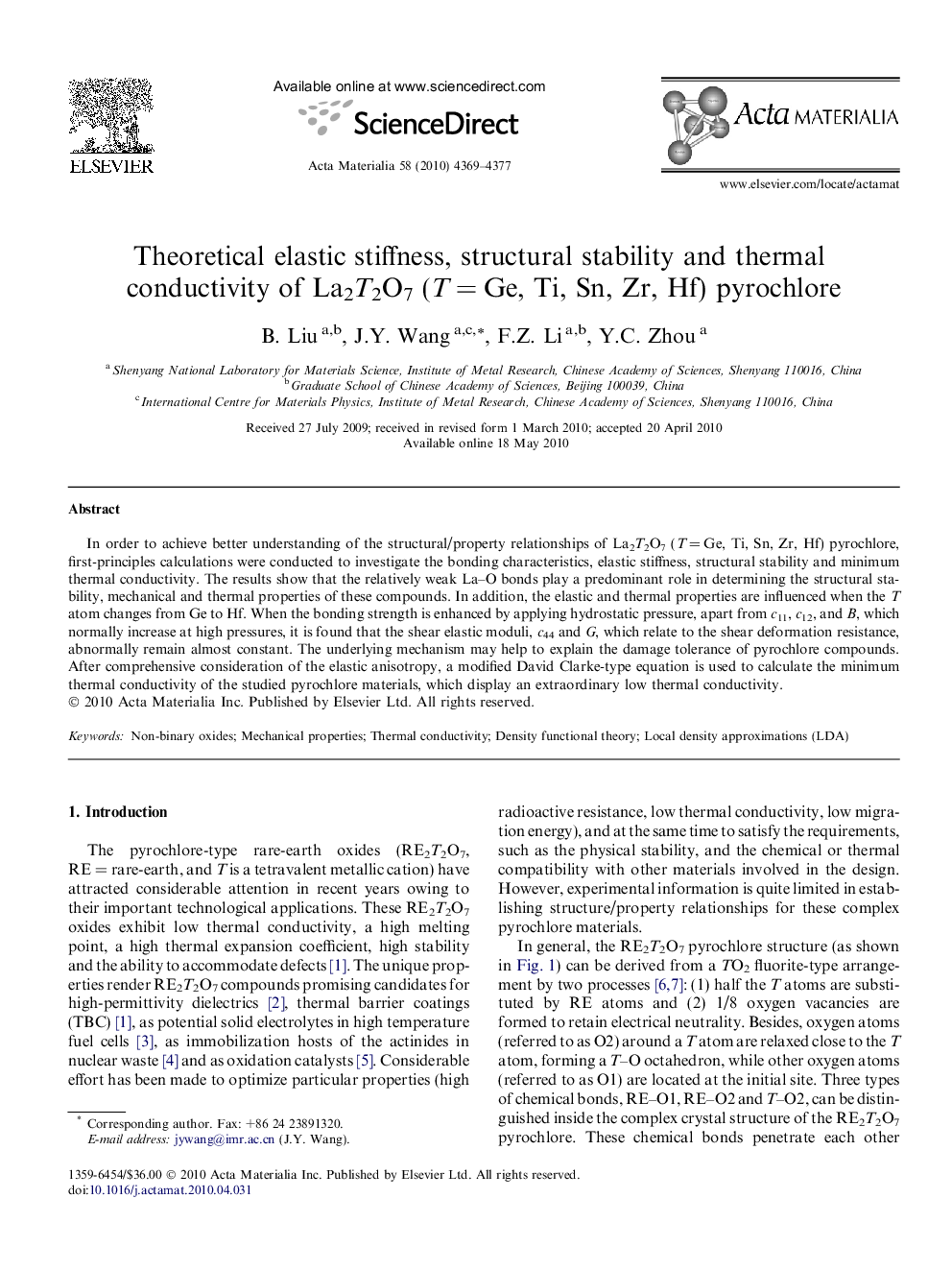| Article ID | Journal | Published Year | Pages | File Type |
|---|---|---|---|---|
| 1448565 | Acta Materialia | 2010 | 9 Pages |
In order to achieve better understanding of the structural/property relationships of La2T2O7 (T = Ge, Ti, Sn, Zr, Hf) pyrochlore, first-principles calculations were conducted to investigate the bonding characteristics, elastic stiffness, structural stability and minimum thermal conductivity. The results show that the relatively weak La–O bonds play a predominant role in determining the structural stability, mechanical and thermal properties of these compounds. In addition, the elastic and thermal properties are influenced when the T atom changes from Ge to Hf. When the bonding strength is enhanced by applying hydrostatic pressure, apart from c11, c12, and B, which normally increase at high pressures, it is found that the shear elastic moduli, c44 and G, which relate to the shear deformation resistance, abnormally remain almost constant. The underlying mechanism may help to explain the damage tolerance of pyrochlore compounds. After comprehensive consideration of the elastic anisotropy, a modified David Clarke-type equation is used to calculate the minimum thermal conductivity of the studied pyrochlore materials, which display an extraordinary low thermal conductivity.
